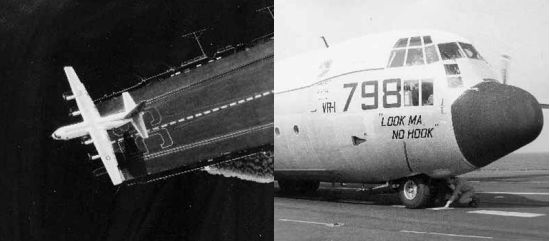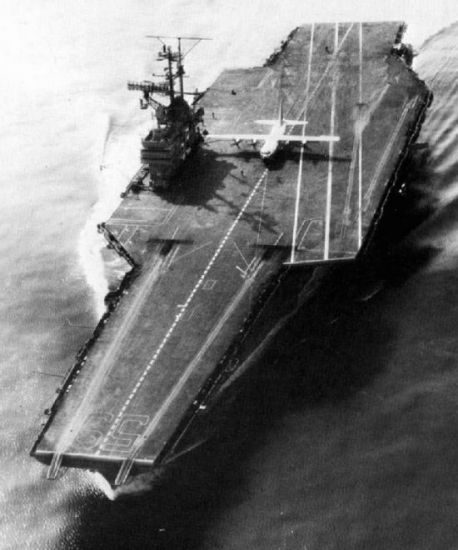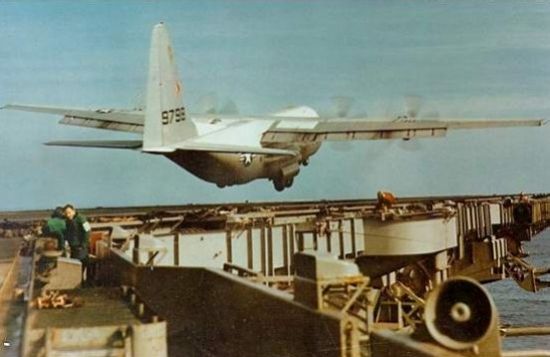TSR-2 next to F-111


The "Rooskis" have two of their own.


Posted on 03/23/2006 8:08:08 AM PST by Cliff Dweller
SYDNEY, Australia — A North Korean cargo ship seized after being used to smuggle heroin into Australia was sunk Thursday when the Australian air force used the vessel for target practice.
The Australian Federal Police said the freighter Pong Su was towed out of Sydney Harbor earlier this week, then destroyed Thursday by a bomb dropped from a F-111 jet fighter and sank 140 90 miles off the coast of New South Wales state.
The vessel was seized in 2003 after being used to smuggle in more than 275 pounds of heroin.
It had anchored off the southwestern Victoria state town of Lorne, while the drug haul was carried ashore by dinghy.
(Excerpt) Read more at foxnews.com ...
As long as we're telling stories on ourselves...
When brand new to the F-111E, an overly trusting pilot gave me the stick while low level over the Netherlands. I saw a couple of A-10s off to the side on a parallel course. Old habits (F-4) die hard - I slammed both throttles into AB and started a roll intending to get to their 6. As we were inverted in full blower while low level in the Netherlands, the now no longer trusting pilot grabbed the controls and debriefed at the top of his lungs:
1 - No BFM low level
2 - No AB allowed over the Netherlands
3 - Slamming a 111 engine into AB is a great way to get a flame-out; doing both at once is a great way to flame out BOTH engines
4 - Double engine flameouts at low level aren't fun
and 5 - just what in the hell are you going to do if you get behind a couple of A-10s...yell at them over the radios?!!!
The remaining flight back to England was kinda quiet. Me for shame, him for fury.
BTW - once was crewed with a pilot who matched me for not liking to talk in flight. We quickly agreed to run checklists by pointing and nodding. On one 7 hour flight over south Iraq, neither of us said a word the entire sortie. As we climbed out at the end, he gave me a thumbs up & I nodded. It was a great sortie!
Com'on PD, the Ardvarrk rules the skies! ;)
TSR-2 next to F-111




I have a question about the F-14. When the wings are swept back, does the elevator then act as the ailerons? Cause watching F-14s launch, it appears there aren't any ailerons on the wings, just one long flap.
Lots of things that are "well known facts", are not true. In any event, who would know better than the guys who had fix the problem, if there was one. Most of those 71 to 73 losses are just "unknown".
Now I know about situation where the TFR might try to fly you into the ground, but those are well known and can be avoided by proper flight planning. (The more modern TFRs will do little better in those situations, it's matter of not getting enough backscatter from the terrain for the radar to detect). None of the losses were in such situations, other than two over water, where the radar altimeter is supposed to control the aircraft when the forward looking radar gets no returns from the water.
Now there might be case or two, although I'm not aware of any, where both TFRs failed. I was speaking of a functional TFR flying the aircraft into the ground. Even if both failed, a fly up command should have been presented and executed. Over most terrain, the system can fail "hard over" and the low altitude warning function, will allow a safe pull up using only 2 to 2 1/2 gees (1 to 1 1/2 "incremental", not counting the 1 gee you get just flying straight and level). An assuming the radar altimeter is working. The LAW won't save you if the failure occurs when you are already in a "full" dive, (actually only about 10 or 12 degrees of dive angle) but that's the reason for all the redundancy, failure detection, etc.
Heavy rain is one possible situation that could cause problems in the early F-111 radars, but only in "rocky mountains" type terrain. Later model radars had logarithmic receivers, those systems would see the rain and try to fly over it, rather than be blanked by it.
I found this declassified 1974 report on the operations in SEA, including an analysis of the potential causes for those losses in theater. In at least the last such case, the crew was recovered, (others were recovered after a stay in the Hanoi Hilton or similar such accomedations) and reported a hit by a "golden BB" which took out the hydraulic system.
In those cases where the TFR was suspect, the conditions were heavy thunderstorms, so it is impossible to know if the radar was blanked by the rain (new versions, but still '70s timeframe, "see" the rain and try to fly over it, due to different receiver characteristics and signal processing techniques) and allowed the crew to fly into a mountain, or if the thunderstorm itself caused the aircraft to go down. Below 1,000' or 500' AGL it doesn't take much of a downdraft to swat you into the strato granite. Two others crashed into the Gulf of Tonkin, implicating the Low Altitude Radar Altimeter, upon which the TF system depends when flying over relatively "smooth" water, and in some extreme situations, not likely to occur when flying out to sea from a relatively flat area such as the coastal areas of North Vietnam. Of the 6 losses, two where definite shoot downs. Four remain somewhat "unknown".
Whenever their is insufficient radar cross section (called sigma0) of terrain, the radar isn't going to be able to see it. The constraints on dwell time, (you have to scan a good sized area fairly quickly, and power aperture (aperture is the size of the antenna, and to a first approximation a bigger antenna can compensate for lower transmitter power, and vice versa.), preclude designing a radar that could see it. (Don't mention sand dunes or snow covered rolling terrain, both are a problem for a radar based sensor). Modern TF systems use digital terrain elevation maps, which allows the radar to be designed for a shorter range, and more sensitivity at those shorter ranges. (You can't depend on the maps entirely, they aren't accurate enough, and you don't know where you are relative to the map(especially in altitude) accurately enough. However the map and GPS/INS sytems can provide you with the early pull information that you need to fly over large features, with the radar, or possibly lidar, to provide the fine positioning information. I've been out of the field for over 10 years now, maybe over 15, what year is it? :) ) So undoubtedly lots has changed. Mainly what's changed is the requirement to do that TF mission in the first place. Now the strike aircraft have all gone stealthy, or are not used until the air defenses have been attitude, at least locally. (Similar to the attrition caused by Army Apaches lead to the Air Defense site by Air Force Pavelow (HH-53 variant). (The Pavelow does have a TF radar, but it's an old one based on the A-7s and RF-4 radars, unless it's been replace by something else when I wasn't looking... it should be, at least by the LANTIRN TF derivative that is used on Army Spec Ops HH-60s and HH-47s).
The TSR would have had a TF radar as well. Much of the work that went into the TSR was eventually used on the MRCA (multi role combat aircraft) now known as the GR-4 Tornado. The GR-1 Tornado is an interceptor variant of the same basic aircraft. Probably different from the GR-4 about as much as the F-111B varied from the F-111A . Because of the different radome shape, they look a lot more different than they really are.
Although while the TSR was a Giant, the MRCA is a compact.
For the F-111, there were two ailerons on the wing. As the wing was swept back, first the inboard and then the outboard ailerons would lock down, leaving the elevator to provide all the roll.
I also did not mean to imply that the F-14 was a bad fighter, just that it wasn't totally optimized for that mission. It's job was to keep the bad guys, be they bombers, fighter bombers or fighters, as far away from the carrier as possible. That means it *had* to be more of interceptor than a knife fighter, where the requirement for one conflicted with those from the other. It's big beast for instance, which is not generally considered the ideal for a fighter, but that was dictated by the need for long range and high dash speed, good loiter ability, (the combination of which, plus the requirement to land on the carrier dictated the Variable Geometry wing) the ability to carry the Phoenix, and that hulking big radar in the nose. The F-16 and YF-17 were more "fighter mafia" designs, even more so than the F-15. Yet both were eventually turned into fighter-bombers, in the F-18 and the later versions of the F-16. Of course almost any good fighter can become a fighter bomber, (which is why the Tomcat was able to end it's career as the BombCat) especially these days when software can be used instead of hardware, to allow switching between roles. The F-16 is not a great interceptor, although it's now being used that way, especially the early versions, which didn't have the legs, nor the ability to carry a good fire and forget (i.e. with autonomous guidance) long range missile. (Until the AIM-120 came along that is, and even it doesn't have the range of the AIM-54, but of course it's also much lighter and causes less drag on the aircraft carrying it). ANG air defense versions of the F-16A/B had specially modified radars just to be able to fire and guide the Sparrow. F-15 could have carried the Phoenix, but never did. At one time there was proposal to have the AF buy some F-14s and use them for Continental Air Defense, because for that mission the F-14 would have been vastly superior. But of the course the AF was about as enthusiastic about that as the Navy was of the F-111B.
"The design featured blown flaps to achieve the short take off and landing requirement, something which later designs would achieve with the technically more complex "swing-wing" design."
This is why the F-111(1996) and the F-14(2006) got retired.
READY ON ARRIVAL: SUPER HORNET JOINS THE FLEET
"Asked to compare the maintenance record of VFA-115's Super Hornets with the record of older F-14 Tomcat squadrons, Briggs said, "There is no comparison. We are light years ahead--it is the easiest aircraft in the Navy to maintain."
"AIRPAC officials confirmed Briggs' assessment. During the past six months, VFA-115's Super Hornets averaged 16.8 maintenance-man hours per flight hour (MMH/FH) to achieve a mission-capable (MC) rate of 71.2 percent. Comparable statistics for another AIRPAC F/A-18C/D Hornet squadron were 21.7 MMH/FH and 63.2 percent MC rate. A Tomcat squadron, by contrast, required 80.6 MMH/FH to achieve a 61.5 percent MC rate. In short, maintenance crews in Tomcat squadrons must work roughly five times as hard to maintain their venerable but aging aircraft."
Heck anyone can land a fight, but how about a C130...



A guy I worked with in the last few years, at my current organization, said he had flown that C-130 as a Marine pilot. The aircraft was a KC-130F, on loan from the Marines. He flew it after these tests. He said something about one of the landing gears always getting stuck in the up position, and having to be manually cranked down. A job they'd give to the more junior of the passengers, preferably those on there first C-130, or first military aircraft flight. :)
I spent 4 years flying TFR operations with the LANTIRN system. We were much safer with the thing on then trying to fly low altitude, at night with nothing but a FLIR to show us the way. The only times guys got in trouble with it was when they ignored it.
Virtually all newer aircraft are easier to maintain than the older ones. Lots of reasons for that. For one thing, sheer performance, in the sense of faster, higher, or longer ranged, became less important, because the practical utility of doing that became essentially nil, except in a few very specialized aircraft or where some new capability is included (Stealth for example, both F-117 and B-2 take quite a few man hours to maintain the stealth features). For another, modern digital avionics are much more reliable, and have lots more BIT (built in test) to help the maintainers find the problems more quickly. Thirdly, maintainability and ease of service has been an important design criteria for at least 2 and arguably 3 generations of aircraft. Engineers can do amazing things, given enough design money, time, and a clear understanding of what is needed and wanted. (Can't tell you how many programs I've been on, including at least one current one, where most or all of those things were missing. That one is two years into the program, and the system engineering team is still trying to figure out what the requirements are. (Not entirely their fault, the military service (which shall remain nameless) asked for everything for everybody, with not enough money or time to do 1/4 of it. Then they jerked the funding around, requiring many man hours of re-planing time, much of it by those system engineers.
Then there was the A-12 ...'nuff said. Just go to the link, or this one for more info on the aircraft itself. It was canceled on Dick Cheney's watch under President G.H.W. Bush when the VP was SecDef.
The late great Col. John Boyd had similar, shall we say, doubts? It was his repudiation of the F-111 that led to the devlopment of the F-15 and F-16.
Of course, he thought your Tomcat was needlessly complex (swing wing and all) too.
They fly the FB-111.
Based on all the reworked Air Force BCM gear we used to get from Indianapolis you folks had plenty of problems with the Raven's ECM suite. However, when you've got greater proportional funding than your counterparts it probably didn't seem that way. You love the Raven and that's all fine and dandy but the Prowler is a more flexible platform.
The 99E was more costly and time consuming to upgrade/modify and couldn't keep pace with advances in the TJS. No TERPES or TEAMS. Did you have band 9/10 capability in '91? As for the speed disparity, the Prowler was designed from the outset to accompany a subsonic strike package. The Raven was a modified "fighter"/bomber that was designed from the outset to have supersonic speed. Had it been a subsonic platform too it's very likely that they would have utilized pods instead of a pallet. However, none of those BUFF crews that VMCJ-1 & 2 supported during Linebacker II ever complained about the EA-6As speed and I'll bet that the Nighthawk pilots over Baghdad didn't complain either. Nobody has ever been lost when protected by a Prowler but a Raven was lost in Desert Storm evading a SAM.
How long would it take your O level guys to replace a jammer or an exciter if they failed BIT while you taxied to the active?
I never, ever heard of an EF-111 transmitter catching fire.
Doesn't mean that it couldn't happen, the Grumman and NAESU guys used to talk about it and if it did what type of fire suppression was available for the pallet? Could the whole thing be pickled? Did you have any coolanol level indicators on your panel?
Based on my hours in the Prowler, my earlier post claiming 80% effectiveness for them was optimistic.
The Raven wasn't subjected to cat shots, arrested landings and a highly corrosive ambient environment. As for mission capability, you flew with Purple VAQs not VMAQs and there's a big difference between a Navy AIMD and a MALS. There's even a difference in assets between VAQs. The Air Force's intermediate maintenance activity was also quite a bit different than that of the Marine Corps and Navy. Lots of test and check and not much component level repair with the zoomies. I'd venture that not many of the Air Force assets spent a lot of time AWP. Plus the fleet of aircraft to support was smaller.
And I have no idea why you think the EFs couldn't operate from an expeditionary airfield.
You had ZERO SATS capability in a Raven not to mention no way to fly from the boat. What do you think the fatigue factor of the Raven crews from the UK was compared to the Prowler crews operating from the America during Eldorado Canyon?
And as I mentioned, the ONLY reason the EF couldn't carry 4 HARMs on every mission is that the USAF, with unbeatable stupidity, refused to put the capability into the jet.
You don't need to explain to me the fact that the Air Force has had its head in its dirt chute regarding EW for a very, very long time.
Disclaimer: Opinions posted on Free Republic are those of the individual posters and do not necessarily represent the opinion of Free Republic or its management. All materials posted herein are protected by copyright law and the exemption for fair use of copyrighted works.